Dim Sum Cart would become history in Hongkong
In many Dim Sum restaurants in Hong Kong, the Dim Sum cart helps the clients to see the food before choosing their favorites. It has been a tradition in Hong Kong restaurants for many years. However, the scene of which waiters pushing the Dim Sum Cart between each table for clients to choose various Dim Sum dishes would become history. Firstly, due to the limited spaces and the high-paid rent, the owners of those restaurants decide not to use Dim Sum cart to save the budget and place more tables to serve more clients instead. In addition, some clients think freshly made Dim Sum dishes are more delicious compared to those stored in the cart.
In the near future, people might not be able to see the scene in which the waiters go around in the restaurant and call out “jiaozi, har gow, siu mai, steamed buns………”
Historical and Cultural Destinations in Hong Kong
As one of the four Asian Dragons, Hong Kong is notable as a city of modernization and pompousness where leads as the centre of international financial transaction, shopping heaven and the birth place of many world-wide well-known actors such as Bruce Lee, Jackie Chan and Chow-Yun Fa. Today, I want to take you on a quick tour to three historical and cultural destinations in Hong Kong which you should not miss if you plan to visit Hong Kong soon:
1. The Tian Tan Buddha (天壇大佛)
Located on the largest island of Hong Kong – Lantau Island, The Tan Tian Buddha, which is known as one of the five biggest Buddha statues in China, is a must- see attraction. The Buddha is a-250-metric ton-bronze statue with the height of 112-foot sitting solemnly on a lotus throne. Completed in 1993, this statue is constructed upon a three-platform altar and visitors have to climb 268 steps to reach it. This Tian Tan Buddha statue represents the connection between people’s beliefs and religion, human and the universe
2. Hong Kong Global Geopark of China (中國香港世界地質公園)
Situated in the East and Northeast New Territories, the area of the Hong Kong Global Geopark of China equals to 5000 hectares. It features 8 areas which form across the Sai Kung Volcanic Rock Region and the Northeast New Territory Sedimentary Rock Region. In 2011, the Geopark was admitted as a member of the Global Geoparks Network by UNESCO.
3. Tin Hau Temple in Joss House Bay (大廟灣天后廟)
Built in 1266, Tin Hau Temple in Joss House Bay is famous as the largest and oldest Tin Hau Temple in Hong Kong, also known as the Big Temple (大廟). On the Tin Hau’s birthday (on 23rd of March of Lunar calendar), many devotee and visitors come to pray for their safety and success. Unfortunately, after being repaired for several times in 1840, 1877 and 1962, the temple has lost its original shape.
Leng3 Zai2, Leng3 neoi5
In Cantonese, Leng3 Zai2 and Leng3 neoi5 means ‘handsome boy’ and ‘pretty girl’ respectively. These words are very common greetings in Hong Kong and can be used in as alternatives to normal address like Mr, Mrs, Ms etc. For example, ” Leng3 Zai2, can i have a glass of seoi2 (water) m4 goi1 (please)”. This would be a normal way of asking a waiter for a glass of water. These first words have been very beneficial as they were great conversation starters.
However, some students would mix up the pronunciation with lek1 zai2 and lek1 neoi5 which means ‘smart boy’ and ‘smart girl’ respectively. It is about compliments – but it is not used in as conversation starters.
Lazy Pronunciations
Lazy pronunciations (or lazy sounds) are the “left-over” phonetic traits from childhood for some native-speakers. Some sounds are difficult to pronounce for a child and they are replaced by similar sounds which would take less effort to pronounce.
As the child grows older and the linguistic ability has developed better, the lazy-sounds will be replaced by the correct sounds. The correction sometimes happens naturally and sometimes requires guidance from the adults.
Unfortunately, this process might not happen to some people, for many different reasons. This is why when people speak with lazy sounds, they sound like a child.
- ‘n’ initial replaced by ‘l’.
E.g., 男 (man) – naam4 becomes laam4 / 你 (you) – nei5 become lei5 - ‘ng’ initial disappears.
E.g. 我 (I) – ngo5 becomes o5 - ‘ng’ final replaced by ‘m’.
E.g. 五 (five) – ng5 becomes m5
In recent years, many young pop-stars suffer seriously from lazy pronunciations and this seems alright, if not trendy. As a result, many youngsters follow them. This was certainly not the case in the past, when lazy pronunciations were less tolerated. I still remember when I was a kid, a children TV program was launched for only a week or so, and one of the hosts got replaced. The reason? Many parents complained that she spoke with lazy sounds.
Canton Tower
On 1st October 2010, Canton Tower has opened to public the first time after 6 years of construction ready for the 16th Asian Game. It was named after the European name of Guang Zhou city. This unique design tower is the fantastic idea of designers from Information Based Architecture and Arup which has won the international design of tower competition. The idea of the design is to build a “twist” building, which is different from all the traditional looks of towers. Canton Tower is described as a “female tower” for its curvy and gracious look. This beautiful building has 108 floors and high 600m. It was the only building which is taller than the Toronto CN Tower at the time.
The tower has nearly 200 m open-air skywalk where people can experience the climb, also there are out door gardens and observation desk at the top floor where visitors can enjoy the beautiful scene of Guang Zhou. The building also equipped with other facilities such as TV and radio transmission, restaurants, exhibition spaces, conference rooms, shops, 4D cinemas etc. One of the special points of this tower is that there are high and low speed lifts available.
Canton tower is also famous for its special architectural lighting design. During the night time, the tower bright up the city with the wonderful color LED light. Each node of the light is control individually to form a smooth glow along the tower.
Improve Your Cantonese Pronunciation!
One of the difficulties for Cantonese language learners is the pronunciation. Most language learners are used to sounds which only exist in their native languages. Therefore, it is essential to be aware of the different sound system. Listed below are some tips to mastering your pronunciation skills:
1. Learn to recognise the differences between some English and Cantonese sounds.
2. Try to hear carefully when you are listening to the CD or in class.
3. Notice how some special sounds are made.
4. Practise moving your lips, jaw, and tongue properly so that you can pronounce the sounds correctly.
5. Choose good dictionaries and good language textbooks, they can add lots of new vocabulary to practice and make learning such an enjoyable experience.
6. Don’t be shy, just try your best to express your idea, even if you make mistake, you can try to explain in simple way.
7. Correct yourself whenever you make mistake, repeat again and again a new word until you are confidence.
8. Accuracy is better than huge vocabulary. If you are good at vocabulary but you say them wrongly, no one can actually understand you.
Learning Chinese Characters through China’s history and culture
I often hear students say that Chinese characters seem to be overwhelming because they are so varied and some of them contain “numerous” stokes. As most learning requires effective ways, learning Chinese characters has its unique way as well.
Besides the pictographic characteristics of Chinese characters (as clarified in “Chinese characters as a form of visual art”), some Chinese characters also indicate the history and culture aspect of China. If you are learning Chinese characters through the stories about Chinese culture and history, it would make the learning more interesting and rewarding. Let’s have a look at the following examples.
The character “子” is a pictographic character (see picture 2.1.). In ancient times, the character “ ” means “children” when it is a radical of a character or “son” when it is a character by itself. The character looks like a baby with a big head while holding up two hands. The character has developed over the time but its modern version still holds some pictographic characteristics.
” means “children” when it is a radical of a character or “son” when it is a character by itself. The character looks like a baby with a big head while holding up two hands. The character has developed over the time but its modern version still holds some pictographic characteristics.
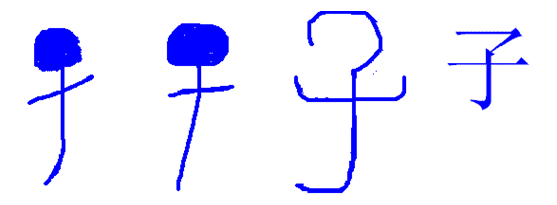
Picture 2.1. the development of Chinese character “子”
The character “女” is more than a pictographic Chinese character (see picture 2.2.). The original version of the Chinese character “女” (meaning female) looks like a lady with both her legs kneeled down. It was created to mean that women in ancient China usually stay at home waiting for either her father (before marriage) or her husband (after marriage) to come back.
This character “ ” (meaning female) also looks like a servant because of its unique posture. This indicates that ancient China is a male-dominate society and women are subordinate to males. In ancient times, Chinese women neither go for work nor go to schools, and the most important work for them is to take care of their husbands and children. In modern times, Chinese women not only receive higher education but also go for work, but they still regard family lives as the most important things in their lives.
” (meaning female) also looks like a servant because of its unique posture. This indicates that ancient China is a male-dominate society and women are subordinate to males. In ancient times, Chinese women neither go for work nor go to schools, and the most important work for them is to take care of their husbands and children. In modern times, Chinese women not only receive higher education but also go for work, but they still regard family lives as the most important things in their lives.
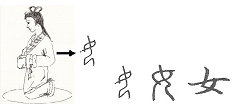
Picture 2.2. the development of Chinese character “女”
When we combine the above two characters (女+子,see picture 2.2. and picture 2.1.) together, we will have the character “好” (Hǎo, meaning “good” ). The character “好” is created with the meaning that it is a good thing when a woman has a child. It indicates that Chinese people pay significant attention of having offspring. There is a Chinese saying goes like this; there are three forms of unfilial conduct of which the worst is to have no descendants.
Anne Ma
Mandarin Language Consultant
Be careful with your Cantonese!
In English, the length of vowel is quite important. If you are not cautious, “sheet” will become “shit”, and “beach” will become “bitch”. Same as English, length of vowel is important in Cantonese. Other than that, tones are very important in Cantonese too. If you change the tone, you change the whole word. The combination of wrong length of vowel and wrong tone in Cantonese can be hilarious, which is the case in the following.
This Tuesday night, my Cantonese beginners’ class was working on the unit about occupations. Teacher was one of the occupations. Its Cantonese is “Gaau6 si1”. As a native speaker, I had never thought this word could turn into something hilarious. When the class practiced its pronunciation, one of the students pronounced it as “Gau2 si2”. I just couldn’t help and laughed. Then the class asked:”Why is it so funny?” I explained:”Well, ‘Gaau6 si1’ is teacher, and ‘Gau2 si2’ is dog poo!” Then everyone just laughed.
This is more than just a funny story. It also shows one of the difficulties of learning Cantonese, especially for speakers of non-tonal language, such as English. There are six tones in Cantonese, and it is quite difficult for English speakers to distinguish them because English is not a tonal language, and its speakers are not trained to pick up tones. Some people may worry about this. However, I think it is just a matter of time and practice. If you put enough effort into it, it is not difficult at all. At the end, these six tones are actually distinguishable.
Chinese character as a kind of visual art
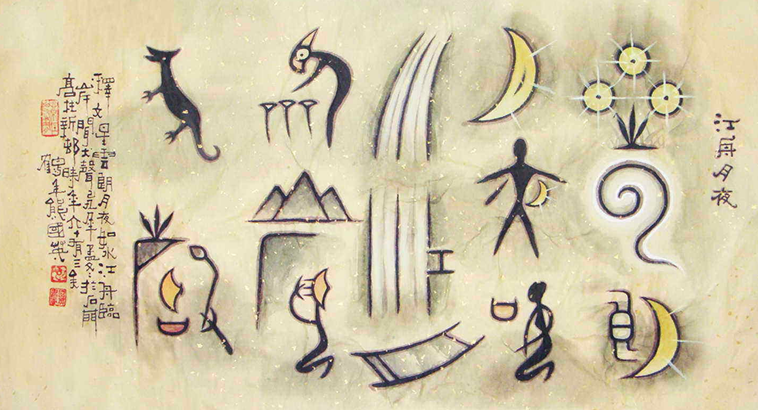
Learning Mandarin usually starts from Pīnyīn, which is a phonetic system that helps people to speak Chinese language. However, Pīnyīn is only part of Chinese language because Chinese language actually consists both sound (Pīnyīn) and symbol (Chinese characters). Chinese character has a history of almost 5000 years, which is almost as long as Chinese history. The different writing systems of the world can be divided into two categories, which are alphabetic writing system and semantic writing system. Chinese writing system is semantic system in which people differentiate the meaning of words according to their forms.
Some Chinese learners said that Chinse characters were like pictures. I would say they are right, considering that pictographs are an integral part and the foundation of Chinese characters. Let’s have a look at some pictographic examples in Chinese characters as follows. You may notice that they are developed from concrete objects and can be regarded as a form of visual art.
![]()
1.1. The development of the Character “rì”, which means “sun”.

1.2. The development of the character “yuè”, which means “moon”.

1.3. The development of the character “shuǐ”, which means “water”.
There are a lot other examples about pictographic Chinese characters and we will be discussing them in the later sessions.
-Anne Ma
All About Cantonese
Before writing this blog I didn’t know anything about the Cantonese language so I decided to do some research and I came up with the following:
1. Cantonese is one of the most widely-spoken languages or dialects in China, is the main language of Hong Kong and is used by Chinese communities around the world.
2. Although it often plays second fiddle to Mandarin, which is considered the official language of mainland China, is has been around for about 2000 years compared to the 700-800 years of the former.
3. People who speak Cantonese don’t necessarily understand Mandarin and vice versa. I am sure a common misconception in Australia is that they are both very similar.
4. Like many Asian languages, Cantonese is tonal and it has at least six to nine tones that you need to master to be understood.
5. There is a great market out there in the world for this language skill.
Wow, the last point is definitely a reason to study the language if you are looking to stand out against others in your field of http://healthsavy.com expertise. What are you waiting for?
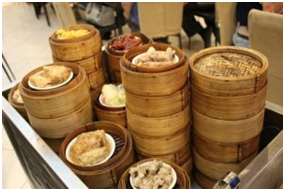
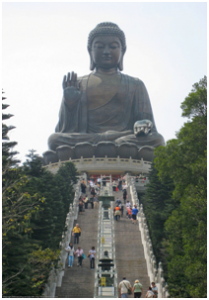


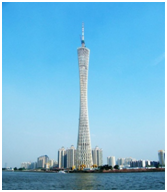




Latest Comments